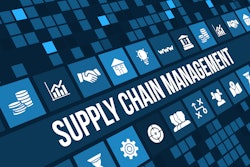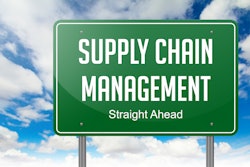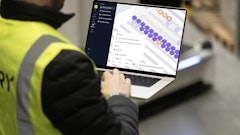
Remember that feeling when you found a $20 bill in your coat pocket? What if you found $40,000 worth of inventory you didn’t you had? While that sounds like great news, it points to a bigger problem facing manufacturers today: the chaos in supply chains has made it nearly impossible to know what you have, what you need, and what it’s going to cost.
The numbers tell a stark story. In the final quarter of 2024, the cost of goods sold for small and medium manufacturers jumped by 103%. You read that right – costs more than doubled. This wasn’t just normal inflation. Companies were panic-buying inventory, trying to lock in prices before expected tariff changes. The automotive sector bought twelve months of inventory at once. They cleared out their entire 2025 supply needs in three months.
This stockpiling made sense at the time. Average purchase prices from overseas suppliers rose 30 percent in early 2025 compared to the previous year. But here’s where it gets tricky – procurement from Canada and Mexico saw prices climb 20% from January to February, then hit 50% increases by March. The volatility wasn’t just about higher costs. It was about not knowing what tomorrow would bring.
Different industries faced different challenges. Food and beverage companies couldn’t stockpile like automotive firms. You can’t buy a year’s worth of cocoa beans or organic ingredients and let them sit on a shelf. These companies had to get creative. They started placing orders earlier but scheduling deliveries closer to when they’d actually use the materials. This let them lock in prices without dealing with spoilage.
The cosmetics industry took a different hit. Many rely on raw materials from Mexico, and their costs skyrocketed along with everyone else’s. But unlike other sectors, they couldn’t easily raise prices. Demand started dropping in early 2025. Now they’re stuck with expensive inventory and fewer customers, a dangerous combination for any business.
Geography played a surprising role in how companies struggled. While U.S. businesses battled price increases, UK manufacturers faced a different demon: late deliveries. By April, delayed shipments in the UK grew by 18% compared to the first quarter. Price wasn’t their main concern – getting materials on time was. This shows how supply chain problems don’t hit everyone the same way.
The traditional playbook for managing inventory doesn’t work anymore. The old “just in time” approach assumed you could predict what would happen next week or next month. Today, court rulings on tariffs get announced and overturned within days. Materials can double in price while they’re crossing the ocean. A supplier you’ve worked with for years might suddenly face new restrictions.
Small manufacturers have some advantages in this chaos, though. They can pivot faster than big corporations. They can switch suppliers, adjust product lines, or change their sales approach without getting approval from multiple departments. The key is having good information to base those decisions on, and this comes from implementing connected, data rich technologies. Companies using demand forecasting tools decreased their inventory levels by 12% while increasing their turnover by 1.2 times. They’re selling more while holding less – exactly what you want in uncertain times.
The smartest approach combines several strategies. First, diversify your suppliers. Yes, working with multiple vendors might cost 5% more in normal times. But when one supplier’s prices spike 40%, that diversity becomes an advantage, not a premium. Second, invest time in understanding your true costs. Apply the right tariff rates to the right components. Know your landed costs – not just material prices but shipping and duties too. Third, focus on efficiency. If you can’t control material costs, the only other way to protect margins is to reduce waste and improve processes.
Looking ahead, volatility isn’t going away. Trade policies shift weekly. Global events disrupt shipping routes. Customer demand changes based on factors beyond anyone’s control. But manufacturers who accept this reality and build flexibility into their operations will thrive. Those who keep hoping things will “return to normal” risk joining the companies that couldn’t adapt during COVID – a cautionary tale we all remember.
The manufacturer who found $40,000 in forgotten inventory found more than just the monetary value of implementing a real time, data rich platform. In today’s environment, success comes from knowing exactly what you have, what you need, and having multiple ways to get it. Because the only certainty in manufacturing today is that tomorrow will bring new surprises.













![Pros To Know 2026 [color]](https://img.sdcexec.com/mindful/acbm/workspaces/default/uploads/2025/08/prostoknow-2026-color.mduFvhpgMk.png?ar=16%3A9&auto=format%2Ccompress&bg=fff&fill-color=fff&fit=fill&h=135&q=70&w=240)



